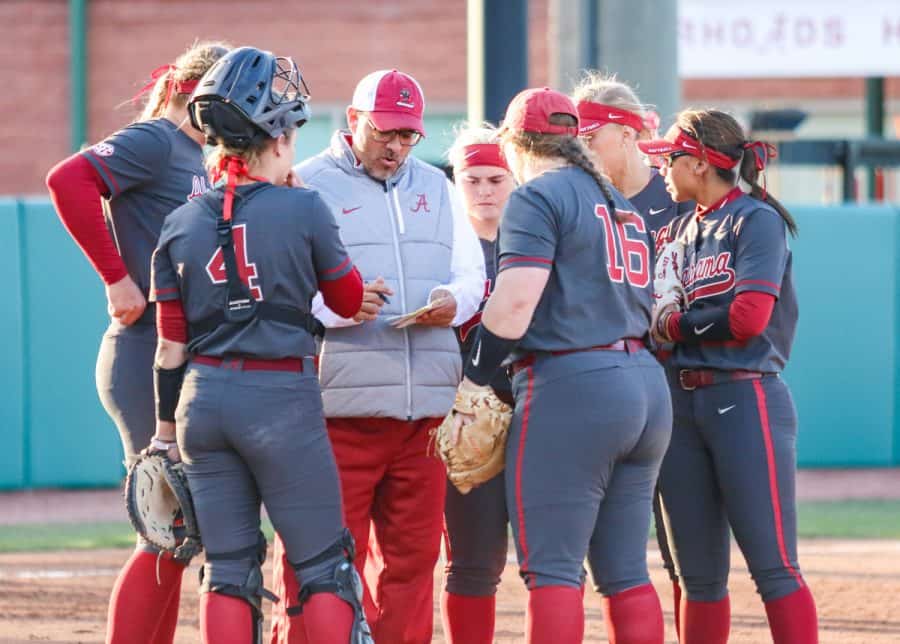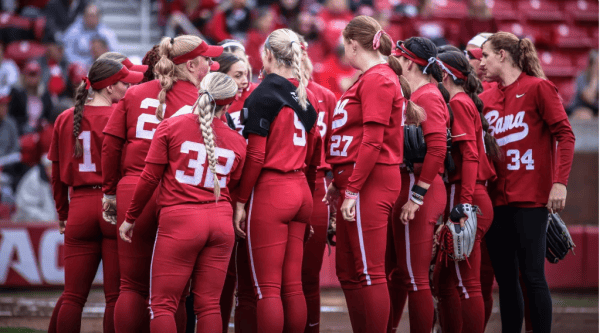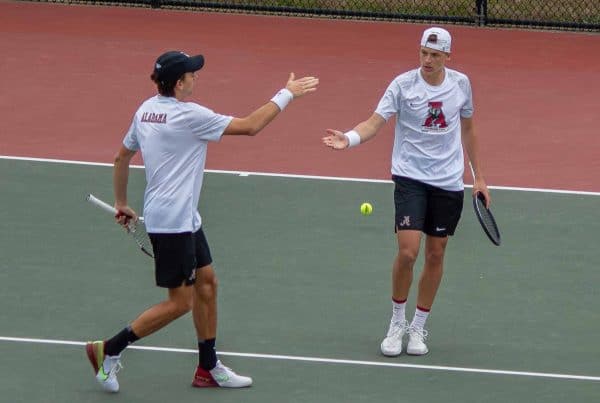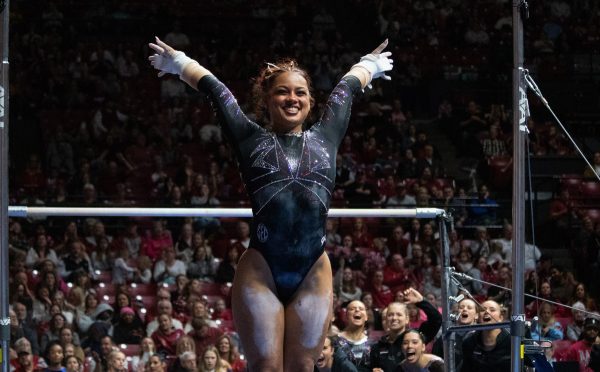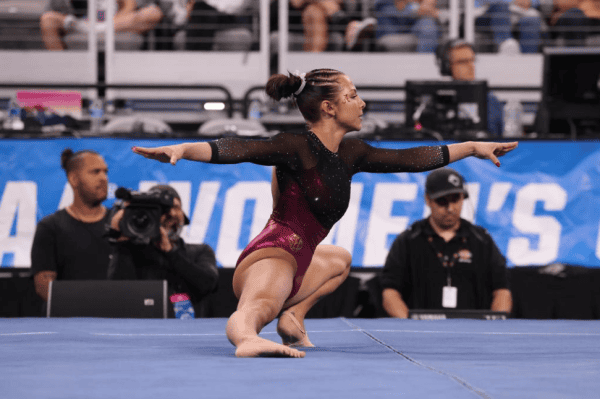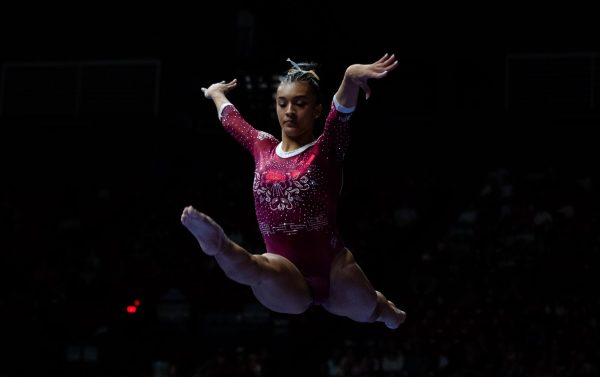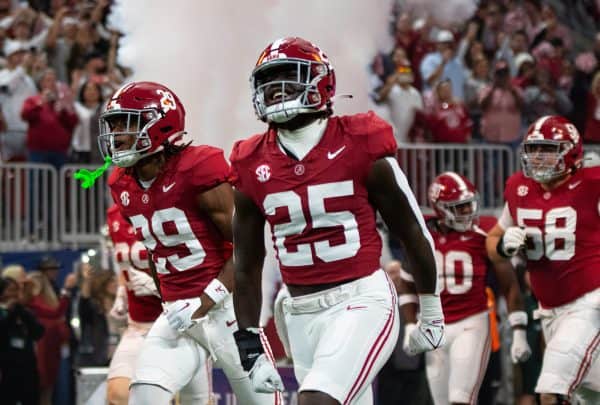Analysis: These players will be vital to UA softball’s 2021 championship chase
September 3, 2020
Alabama’s returning talent makes the 2021 season look like one for the ages, but it will take more than a team’s starting nine to hoist a national championship in Oklahoma City come June. The past three national champions have demonstrated the importance of not solely relying on an ace pitcher and having a confident bat on the bench ready to make her presence felt.
Here is a look at contributions from role players on the past three national championship teams:
2017: Oklahoma turned to then-junior ace Paige Parker in Game 2 of the championship series against Florida to capture the program’s second straight national championship. Although Parker was pulled in the second inning after giving up three runs, the Oklahoma offense was able to regain a 5-3 lead after two complete innings. Oklahoma was able to hold onto its lead due to the efforts of three different pitchers out of the bullpen in the last 5.2 innings of the game.
“To see four pitchers pull this off is a dream come true for a coach because every one of them had a piece of this,” Oklahoma head coach Patty Gasso said in the post-game press conference.
2018: Florida State entered the Women’s College World Series with the ACC Pitcher of the Year Kylee Hanson, but it was the southpaw Meghan King who would lead the program to its first national championship. King got the start in the Seminoles’ first elimination game of the WCWS against Georgia (after Hanson took the Game 1 loss a couple of nights earlier) and threw a dominant complete-game win. Florida State won the next three elimination games that followed with help from King in each game. Head coach Lonni Alameda noticed the dominance of King and handed her the ball in Game 1 of the championship series against Washington. King recorded back-to-back wins against the Huskies, allowing only one earned run, and would be named the tournament MVP.
“We’re a staff, we work as a staff,” Alameda said in the post-game press conference. “Yes, Meghan got these games for us here, but Kylee was huge for us throughout the season. The staff is where it’s going now too.”
2019: UCLA and Arizona were at a 1-1 standstill on night two at the Women’s College World Series, both offenses unable to find their groove. UCLA head coach Kelly Inouye-Perez decided that it was time to bring a fresh presence to the plate and inserted then-sophomore Malia Quarles to pinch-hit in the top of the sixth inning. Quarles broke the tie as she launched a solo home over the left-center fence. The Bruin offense roared to life and proceeded to score another four runs in the seventh inning.
“As a coach, there are certain players that you hone in on for those personal opportunities,” Inouye-Perez said in an interview with Softball America in 2019. “Sometimes you put them in, it doesn’t work. Sometimes do you and those big moments happen.”
With rosters deeper than ever due to seniors returning for a fifth year, exhausting their extra year of eligibility granted by the NCAA due to the coronavirus, along with a trio of Olympians making their way back to the collegiate stage, the importance of a pitching staff and contributions from role players is only magnified.
Alabama softball’s preparation this season is going to be vital for success. Pitchers will face daunting lineups that feature three to four All-Americans, and hitters will battle pitching staffs with two or three potential Friday night starters.
An educated prediction for the 2021 season is that pitchers will throw fewer complete games. A multi-arm staff will allow coaches to keep the opposing offenses off-balance throughout a game, playing pitching-hitting matchups as seen in Major League baseball and helping to keep pitchers fresh for the postseason. Luckily for head coach Patrick Murphy, he has the depth to do so with six pitchers on the staff. It will be important to make sure junior pitcher Montana Fouts and sophomore pitcher Lexi Kilfoyl have enough gas in the tank come postseason play.
Despite the multitude of lineups Murphy and staff can formulate as each position is two to three players deep, here are what looks to be the consistent role-players throughout the season:
Sophomore Jenna Johnson: Last season Johnson started in centerfield in 21 of the 22 games, but is unlikely to do so this season as Brown returns to centerfield after recovering from an injury last season. However, Johnson looks to receive a fair share of starts as she displays power to the left side, provides speed on the basepaths and can also handle herself on defense. These three facets of Johnson’s game will give Murphy the flexibility to insert her during any given moment of the game.
Sophomore Savannah Woodard: Woodard is in the same position as Johnson, having started most of last season at the second base position, but with the potential for junior Skylar Wallace to move back to second base should redshirt senior Claire Jenkins return to shortstop off of her ACL injury. Woodard is more than likely to receive a few starts throughout the season but will look to serve as a pinch-runner and pinch-hit if a hit needs to be placed on the right side.
Redshirt junior Kyra Lockhart: Despite only reaching base once out of eight attempts last season, Lockhart worked into deep counts and has the ability to hit with power to all parts of the field. It will be no surprise if Murphy calls on Lockhart in situations where a flyball is needed to help a runner advance and score from third.
Fifth-year senior Taylor Clark: Clark launched two home runs last season and will be called upon to do so again. From the 2019 to 2020 season, Clark found a better groove at the plate and improved on recognizing the strike zone. If Clark builds off of the 2020 season, there will be a handful of times she gets her number called upon.
Freshman Kyleigh Haney: When Murphy was interviewed about the recruitment of Haney, he described her as one of the best hitters he has ever seen come out of the high school level. Haney will likely receive pinch-hit opportunities with runners in scoring position and provide catching relief to sophomore Abby Doerr.
These five players, along with the other 18, still have six months to compete for a starting position on one of the most talented rosters in the country. If history repeats itself, whoever finds themselves as a role-player will have to make contributions in big situations in order to help the program capture its second national championship.

